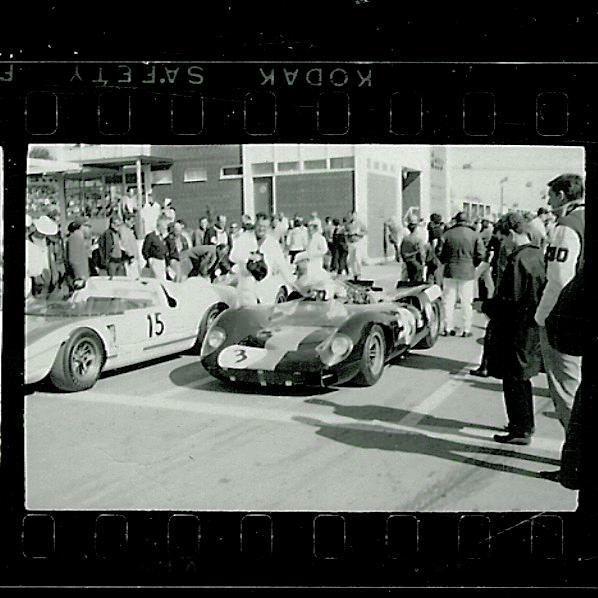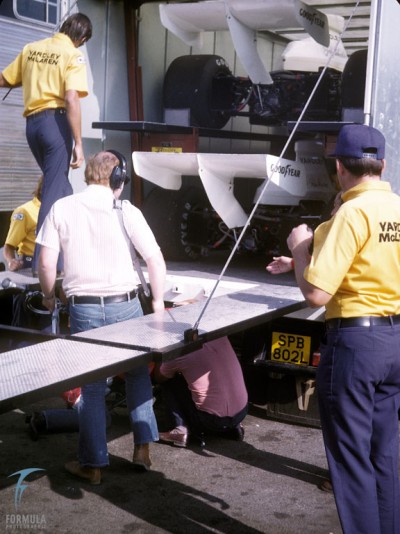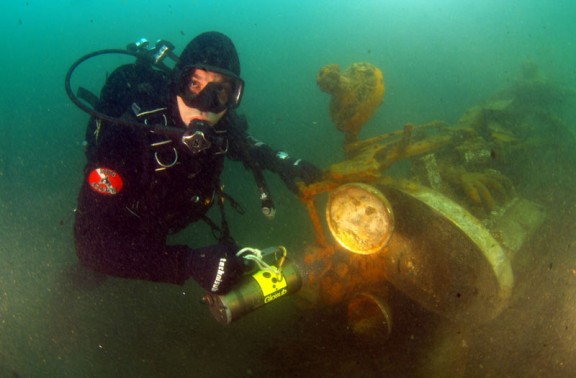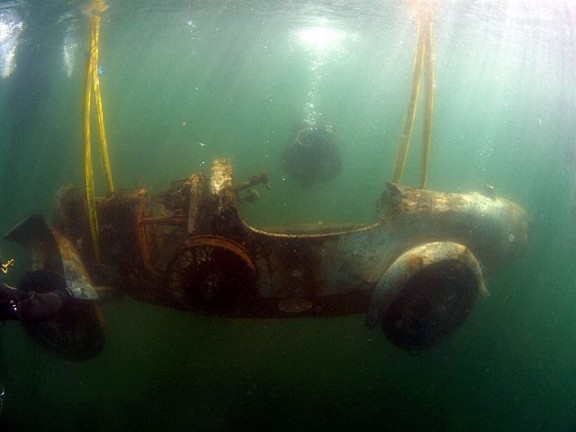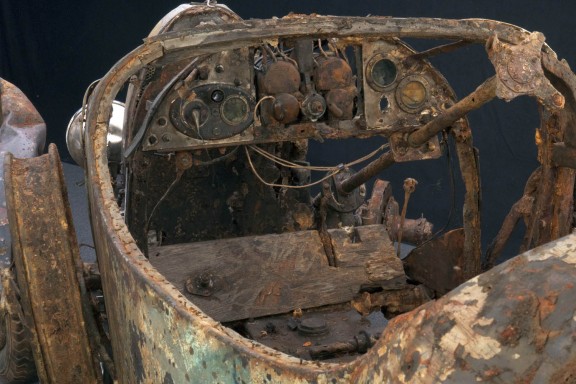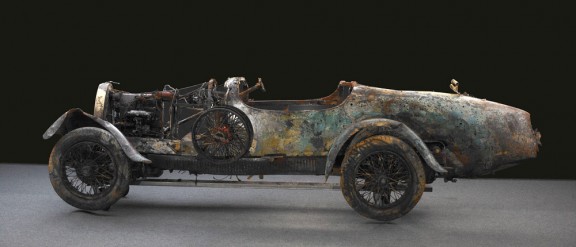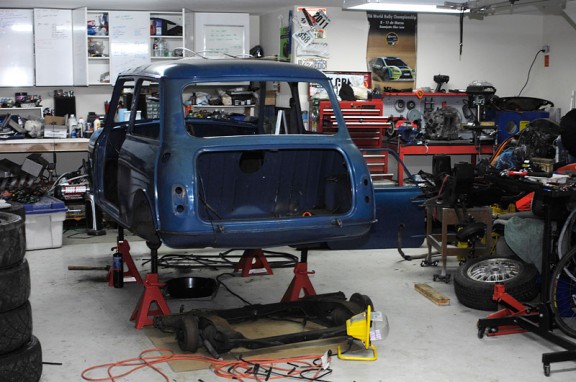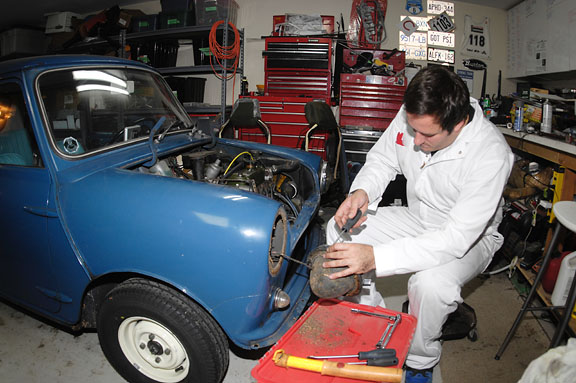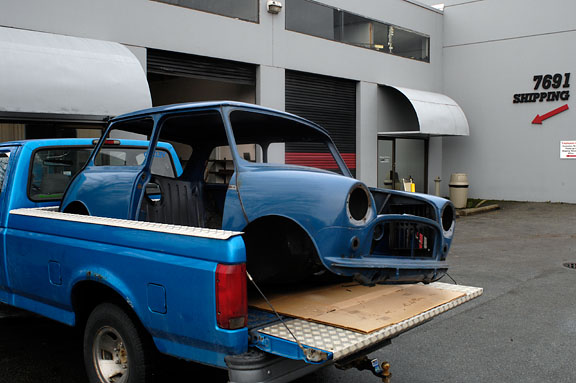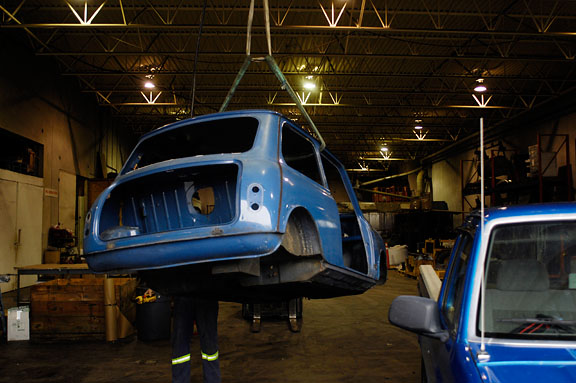The Canadian Motor Sport History Group on Yahoo is a treasure trove of Canadian racing knowledge and nostalgia, and The Garage Blog recently posted a collection of Rob North’s contact sheet scans from the 1965 Grand Prix at Mosport, in Ontario. Names like Hobbs, Hall, and McLaren all pop up in these photos, and it is fascinating to compare the scenery and layout compared to today. Just the growth of trees in 40 years drastically changes the sight lines and look of the place! Check out the full gallery, and more great history and stories at The Garage Blog.
Tag Archives: feat
Car Movies: Un Homme et Une Femme
 Although the classic French movie Un Homme et Une Femme (A Man and a Woman) is essentially a love story between the character Jean-Louis and the young widow, Anne, the former is a racing driver and the movie features a lot of great cars. From Mustangs on the road to a Brabham and GT40 on the track, this movie is a must-see for all classic car fans.
Although the classic French movie Un Homme et Une Femme (A Man and a Woman) is essentially a love story between the character Jean-Louis and the young widow, Anne, the former is a racing driver and the movie features a lot of great cars. From Mustangs on the road to a Brabham and GT40 on the track, this movie is a must-see for all classic car fans.
Directed by none other than Claude Lelouch, of C’Etait Un Rendezvous infamy, the movie was a critical success, being awarded a Grand Prix at the 1966 Cannes Festival, and a Golden Globe for the soundtrack. It features the rich visual style of Lelouch, a quirky French cinéma style, and the now-uncommon trait of telling the story through images instead of constant dialogue.
Enjoy this trailer for the movie, and an extended race car scene, and be sure to find the full film if you haven’t already!
Tents collapse at Russo & Steele Auction
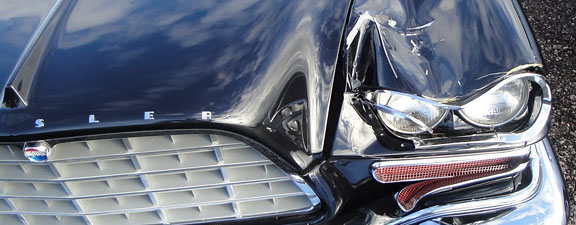
Photo: All Classics LLC
Saturday Update: Insurance and owners are documenting the damage today, and Russo & Steele will be issuing a revised catalog shortly for auctions on Sunday and Monday. For some photos of the damage, check out All Classics LLC’s gallery. Not for the faint of heart!
Heartbreaking automotive disaster struck the Russo and Steele classic car auction in Scottsdale, Arizona yesterday, as thunderstorms and high winds rolled in, collapsing two tents onto hundreds of auction cars. The site has been closed to media and attendees while the Fire Department secures the venue, and car owners have not yet been able to assess the damage the collapse might have caused. More news will be forthcoming as things get sorted out, but you can be certain there are some damaged cars and devastated owners. Thankfully, nobody was seriously hurt in the event. [via Auto-focus.us and Paul at Automobiliart]
YouTube video of the tent collapsing (warning: strong language in the background…but I think I’d be yelling the same thing if my car was in there!)
News Report:
Paddocks of the Past: Silverstone 1973
Yardley McLaren team members start to unload their team transporter at the 1973 John Player Special British Grand Prix at Silverstone. Compared to the multi-level transforming ‘hospitality suites’ the F1 circus has now, the transporters of 1973 were little more than a shed on wheels.
The two McLaren M23 F1 cars epitomize the “wings and slicks” era. With their massive whale-tail wings, aeroquip hoses, and tall airboxes, they look impressive, with the car on top for Jody Sheckter, and the bottom for American racer, Peter Revson. Revson would go on to win the Grand Prix that weekend, after a huge startline pile-up forced a restart (see video below). Can’t quite figure out what the man with the headset has in his hand, and what the two people on the ground are up to. Perhaps a TV crew?
Classic cameras for classic cars
 When I started shooting action sports and mountain biking movies about 10 years ago, my first camera was an old Bolex 16mm camera. Shooting on film was a great learning process, and certainly made you focus on the task at hand. With only two minutes (and $60) worth of film on each reel, you learned to get things right the first time. Set and check exposure with a light meter. Choose focal length, shutter speed and frame rate. Roll camera (clackity-clackity-clack), and cue action! If all went well, you’d find out in a few weeks or months – whenever you got the film developed – whether that shot worked out. Pretty soon, the switch to digital video was made and I’ve never looked back.
When I started shooting action sports and mountain biking movies about 10 years ago, my first camera was an old Bolex 16mm camera. Shooting on film was a great learning process, and certainly made you focus on the task at hand. With only two minutes (and $60) worth of film on each reel, you learned to get things right the first time. Set and check exposure with a light meter. Choose focal length, shutter speed and frame rate. Roll camera (clackity-clackity-clack), and cue action! If all went well, you’d find out in a few weeks or months – whenever you got the film developed – whether that shot worked out. Pretty soon, the switch to digital video was made and I’ve never looked back.
Lugging modern high-definition cameras around at a vintage meet somehow seems to defeat the purpose and aesthetic of these events. We immerse ourselves in the atmosphere and culture of a bygone era – especially at events like Goodwood – and yet you rarely see vintage camera gear. Don’t get me wrong, I’m no luddite and the new video and photo gear is amazing, but I’ve been thinking about dusting off my old Bolex H16 to shoot some historic racing this year. Today’s video post on the always wonderful Chicane Blog has me convinced to give it a go:
Filmmaker Dikayl Rimmasch shot some great footage of the 2006 Rolex Invitational at Lime Rock testing two historic film cameras, a Bell & Howell 70 KRM (the KRM was the military model, this example was from the Vietnam era) and a 1930’s Cine Kodak. The beauty of these cameras is that you can achieve a very vintage look (grain, light flicker, etc) without having to fake it in post-production. The result is a gorgeous piece of film who’s technique does a service to the subject matter. Great stuff.
Bugatti ‘Lake Find’ up for auction
Classic car lovers always get excited when news of a rare, well-kept gem is unearthed in a barn or under a tarp in a back yard. It’s not often you hear of a “lake find”, but this story of a tax-evading 1925 Bugatti Brescia 22 Roadster being retrieved from the bottom of a lake in Switzerland has many people talking. It is up for auction by Bonhams at the Retromobile show on January 23, 2010, with an estimate of over €70,000. But the big question remains…what do you do with a rotten, half-missing lump of nostalgia? Bonhams kindly suggests that it might be more appropriate to preserve the wreck and build a replica. Here’s the back story…
Over the course of the past few months, one car in particular has become one of the most celebrated of all Bugattis, having lain submerged beneath the waters of Lake Maggiore in Switzerland for more than 70 years. The whereabouts of the sunken Bugatti had been known to the local scuba club for many years but in February 2008 a tragedy occurred that would eventually lead to its retrieval. On the 1st of that month, Damiano Tamagni was attacked by three youths and beaten so severely that he later died from his injuries. Damiano and his father Maurizio were both members of the scuba club in Ascona and it was decided to raise the Bugatti and use the funds from its sale to further the work of a charity set up in Damiano’s name, ‘Fondazione Damiano Tamagi’, which seeks to address the issue of juvenile violence.
But how did the Bugatti come to be in Lake Maggiore in the first place? Subsequent research has uncovered much of its history. On 11th April 1925, chassis number ‘2461’ was registered in Nancy, France in the name of Georges Paiva, with the number ‘8843 N 5’. A small brass plate found on the car after its removal from the lake bears the name ‘Georges Nielly, 48 Rue Nollet, Paris’ but the registration plate is only partly legible, the last digits being ‘RE 1’. This registration was issued in Paris between May and June 1930, which perhaps indicates that Georges Nielly bought the car earlier in 1930 at Nancy and had it registered in Paris in his name. These French registration plates have remained on the Bugatti ever since.
The Bugatti chassis number plate is missing, as is the enamel Bugatti radiator badge. Apart from that, all the relevant numbers are to be found in their usual places. The chassis number ‘2461’ is on the round boss, located on the right front engine bearer (on the side of the exhaust manifold and steering-box) while the engine number ‘879’ is visible on the little round boss, located on top in the middle of the cam box, as well as at the front face of the lower crankcase, next to the water pump.
The gearbox bears the number ‘964’ at the back as well as the usual place on the cover. The rear axle has no number, which is normal for a Bugatti Brescia, but the ratio is stamped on the central casing and reads ’12 x 45′. The radiator is made by Chausson, as indicated on a plate just above the cranking handle, while the two rear spring carriers still bear the little brass plates with ‘EB, Bugatti, Molsheim (Alsace)’ on them. Contrary to the factory data, which mentions a Solex carburettor, the actual carburettor on the car is a bronze Zenith, correct for this type of Bugatti. The two magnetos (twin ignition) are made by SEV and mounted in the middle of the dashboard as usual for this type of car.
There are indications that the body may have been modified or replaced, the first one being, probably, a simple racing body lacking electrics and mudguards. The valances below the bonnet are in two pieces, where normally they would be in one piece, while the mudguards are slightly flared at the rear, which is unusual for 1925. All this possibly indicates a modified or new body made at the end of the 1920s.
So far, it has not been possible to determine with certainty the identity of the Bugatti’s owner in Ascona. However, the most likely candidate is Marco (Max) Schmuklerski, a Zurich-born architect of Polish descent. He is known to have stayed in Ascona from 17th July 1933 until 25th August 1936 when he left and returned to Zurich. At Ascona he designed, among other buildings, the ‘Casa Bellaria’ an apartment block that has only recently been demolished. If Marco Schmuklerski studied architecture at the famous Beaux Arts school in Paris, it is possible that he bought the Bugatti from Georges Nielly and brought it back to Switzerland, but without paying any import duties. It is also possible that he acquired the car from a French tourist (or client) at Ascona. Whatever the case, the Bugatti has always been driven in Switzerland with its last French plates and import duties have never been paid. Nor has the car ever been registered with Swiss plates.
The story going around Ascona is that Marco Schmuklerski left in 1936, leaving behind the Bugatti, which was stored in the yard of a local building contractor, Barra. Its owner at this time is not known, but the local customs officers knew of the car’s existence and insisted on payment of the import duties owed. At that point these duties may have amounted to more than the value of the Bugatti, which was 11 years old and well used. In the case of non-payment of the duties, the car had to be destroyed and the simplest way to do so was to tip it into the nearby lake. To facilitate its recovery the Bugatti was attached to a heavy chain, but when this finally corroded away the car fell to the lakebed at a depth of 53 metres.
It remained there, undiscovered, until 18th August 1967 when diver Ugo Pillon located the mythical Bugatti, which was lying on its left side, partly buried in the mud. Pillon had been searching for it for some time and after its rediscovery the car became a popular target members of the local sub aqua club. On 12th July 2009, after a 73-year sojourn in Lake Maggiore, the Bugatti was finally rescued from the lake by Jens Boerlin and his comrades from Ascona’s scuba club. Local dignitaries and members of the Bugatti Club Suisse were in attendance, and the Bugatti was transferred by crane onto a trailer for inspection by the sizeable crowd of onlookers. Its long immersion in the lake had resulted in extensive deterioration, ferrous components being badly affected, particularly on the car’s exposed right-hand side. Other materials like wood, aluminium, brass, rubber, etc have survived in much better condition. It would, of course, be possible to restore the car, but it has been estimated that only some 20% of the original is reusable. Alternatively, a faithful replica could be created, using ‘2461’ as a pattern, for approximately the same cost as a full restoration. Arguably, it would be more appropriate to preserve the Brescia in its current state for static display, but that is for the fortunate new owner to decide.
Full Auction Listing on Bonhams.com
UPDATE (January 25, 2010): At auction for charity, the “lake find” Bugatti sold for a stunning €260,500! From Bonhams’ press release: “The Bugatti Type 22 that had lain submerged 53 metres below the surface of Lake Maggiore for over 70 years had attracted much pre-sale publicity. A number of telephone bidders sparred against those in the room. The winning bidder – a European collector representing the Peter Mullin Collection in California – will show the car in its present condition in his museum, whereas the underbidder – an American – had intended to restore the car.”
Project Mini: The Halfway Point
Occasionally, Classic Car Adventures will have an update on our in-house project cars, and also those of our readers. In this first installment of the Project Mini series, Warwick has reached a milestone in his first ever restoration – the teardown to bare shell is complete!
Owner: Warwick
Car: 1966 Austin Mini 850
Project Status: Car has been fully stripped and sent for a hot bath!
Pros: Sense of great satisfaction from getting the teardown done.
Cons: Scared to death of what the shell is going to look like when it comes back from rust dip!
First off, let me introduce you to “Abby”. She is a ’66 Austin 850 from Vancouver, Canada. The car has lived here it’s whole life, having been in one family since new. Approximately 40,000 miles on the clock and is in a decent state. I bought it in November 2008, and it made its first public appearance on the 2009 Spring Thaw. I drove it all summer, so it was certainly in better nick than some projects I’ve seen people start with! The car had been sitting under a tarp on the side of the road for goodness knows how many years, so I just *had* to rescue it. After a minor tune-up and safety check, we were on our way for the Spring Thaw.
Apart from nearly popping the motor on the first major climb on the ‘Thaw – coolant spraying on the windshield is never good – the Mini handled everything I threw at it for the rest of the event, and indeed the rest of the summer. The usual rust bubbles were popping up, however, and she did have some mechanical gremlins to sort out. As the leaves turned orange and the temperature dropped, I decided I was going to take the plunge and start on a basic restoration. I could turn this thing around in 7 months, right?
Fortunately for me, the ‘Rookie Restorer’, the Mini is as simple as they come. My lack of experience with wrenching on cars has often caused frustration in the past. I told myself at the beginning of this project that I was going to put my head down and just motor through any problems or confusion. Apart from a few rusted and stripped bolts, the Mini didn’t throw up any problems that a forum search or manual read couldn’t solve. Each problem solved resulted in more satisfaction and confidence to attack the next task.
It’s now mid-January, and the Spring Thaw is just three months away. At the beginning of the month, I finally got the last nut and bolt off the car and the shell was officially ‘bare bones’. Its very satisfying to stand back and look at a car that you’ve totally stripped with your own hands. In effect, undoing 40 years of “togetherness!” Visually, it marked a big turning point because now the long climb back to roadworthiness could begin.
I decided to take the shell to Redi-Strip in Vancouver for chemical cleaning and rust removal. As of January 14th, that is where the car sits and I am scared to death of what the car will look like when I pick it up! Was the shell in as good a condition as I thought, or am I going to get a horrible surprise? I should know by Monday whether I’ve got a 3-month or 13-month project on my hands!
As co-organizer, am I allowed to delay the Spring Thaw a few months to ensure I have a car for it?

